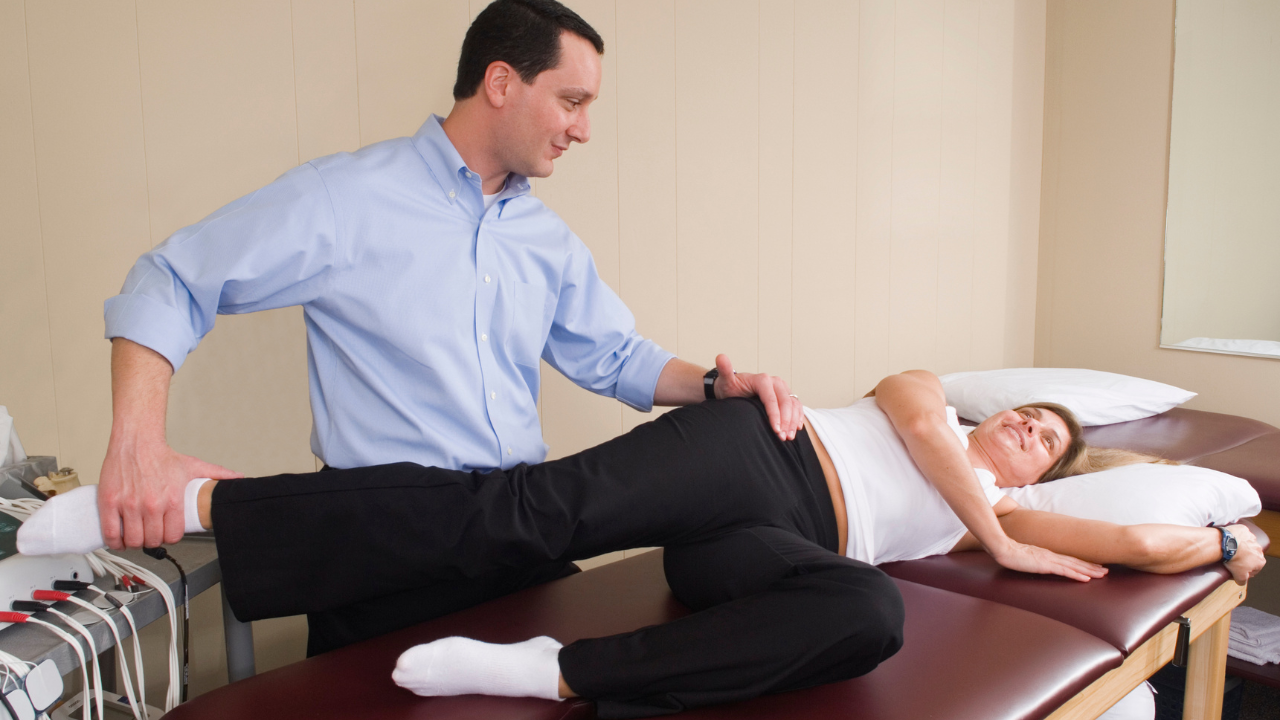
Hip pain can be a constant, frustrating companion, often limiting your ability to enjoy everyday activities. Whether it’s from an injury, aging, or simply overuse, the discomfort can range from a mild ache to a sharp, debilitating pain. If you’re struggling with hip pain, physical therapy could be your ticket to relief. Through tailored exercises, hands-on treatments, and professional guidance, physical therapy provides a comprehensive approach to addressing the root causes of your pain, improving strength, mobility, and function.
Understanding the Causes of Hip Pain
The hip is a complex joint that bears much of your body’s weight and is involved in most movements. Hip pain can result from a variety of factors, including osteoarthritis, tendinitis, bursitis, fractures, or muscle imbalances. It can also stem from poor posture or overuse, especially for athletes or individuals who lead an active lifestyle. Understanding the cause of your hip pain is crucial in developing an effective treatment plan.
Physical therapists are trained to assess and diagnose the specific issue affecting your hip. They can pinpoint whether your pain is caused by inflammation, weakness, or instability and design a plan to address it. This individualized approach is key to achieving lasting relief, rather than simply masking the pain with medications or temporary fixes.
How Physical Therapy Helps
When you begin physical therapy for hip pain, a therapist will first assess your condition. They’ll evaluate your movement patterns, posture, flexibility, strength, and the overall health of your hip joint. This allows them to develop a targeted program designed to relieve pain and improve function.
One of the core components of physical therapy is movement-based rehabilitation. This can include stretching and strengthening exercises aimed at improving the mobility of the hip joint and the surrounding muscles. Strengthening the muscles around the hip, such as the glutes, quadriceps, and hip flexors, is essential for stabilizing the joint and reducing strain.
Many people suffering from hip pain experience muscle imbalances, where some muscles are too tight and others too weak. Physical therapy helps restore balance, teaching your body how to move properly without overloading certain muscles. For example, strengthening the core and hip muscles can help take pressure off the hip joint and reduce discomfort.
Hands-On Techniques and Manual Therapy
Physical therapists use manual therapy techniques to treat hip pain, which can be incredibly effective. These hands-on techniques include joint mobilizations, soft tissue massage, and myofascial release. Through these methods, your therapist can reduce muscle tension, improve circulation, and relieve stiffness around the hip joint.
Manual therapy can also target specific areas of tightness and discomfort, offering immediate relief. Additionally, therapists may teach you self-massage techniques that can be done at home to maintain results and prevent flare-ups of pain.
Posture and Movement Education
A large part of physical therapy for hip pain involves education on proper posture and movement patterns. Often, hip pain can be exacerbated by poor posture, improper lifting techniques, or walking and sitting habits that put unnecessary strain on the joint. A physical therapist will help you become more aware of how you move and provide guidance on making adjustments to reduce stress on the hips.
For example, they might teach you techniques for standing, sitting, and walking with better alignment to minimize the load on your hips. These changes can prevent further damage and help you maintain healthy, pain-free movement patterns over time.
Tailored Exercises for Long-Term Relief
The exercises you will perform during physical therapy are designed to address the root cause of your hip pain while improving your overall strength and stability. These exercises are progressive, meaning they will start out gentle and gradually increase in intensity as your body adapts.
Common exercises might include stretches to improve flexibility and mobility in the hip joint, as well as strengthening exercises to target the muscles that support the joint. For example, clamshell exercises, bridges, and leg raises are commonly used to strengthen the hip abductors and stabilizing muscles.
Therapists often incorporate functional exercises into your routine, mimicking the movements you make throughout your day. For instance, if you’re a runner, exercises will focus on improving your running mechanics and addressing any weaknesses or imbalances. This ensures that your therapy directly translates into real-world improvements in your activity level and quality of life.

Modalities for Pain Relief
While exercises and manual therapy are essential, physical therapists also use various modalities to manage pain and inflammation in the hip joint. Some of these modalities include:
- Heat and cold therapy: Ice packs can reduce inflammation, while heat can promote blood flow and ease tight muscles.
- Electrical stimulation: This technique uses low-level electrical currents to stimulate muscles, reduce pain, and enhance recovery.
- Ultrasound therapy: Sound waves are used to penetrate deep into the tissue to reduce pain and inflammation while promoting healing.
These treatments complement the exercises and manual techniques, helping to accelerate healing and manage pain.
The Role of Physical Therapy in Preventing Future Hip Problems
One of the greatest benefits of physical therapy is that it doesn’t just treat your current pain—it also helps prevent future issues. By addressing muscle imbalances, improving flexibility, and enhancing joint mobility, physical therapy helps build a foundation for long-term hip health. It teaches you how to move correctly, how to avoid strain, and how to protect your hips during physical activity.
A physical therapist can also provide advice on lifestyle modifications that support hip health, such as proper footwear, ergonomic adjustments, and safe exercise routines. If you have an active lifestyle or participate in sports, a therapist can create a maintenance program to ensure your hips stay strong and resilient.
Mental and Emotional Well-Being
Living with chronic pain, including hip pain, can take a toll on your mental and emotional well-being. Physical therapy not only focuses on your physical recovery but also supports your overall health. Through one-on-one interactions with a therapist, you gain a sense of support and reassurance that you’re on the path to recovery.
Moreover, seeing improvement in your range of motion and pain levels can boost your confidence and motivate you to stay on track with your therapy plan. This holistic approach to recovery addresses not just your physical symptoms but also helps you maintain a positive outlook on your journey to recovery.
Suggested Reading: What to Expect from Back Pain Therapy: Methods and Techniques
Conclusion: The Path to Relief with Thrive Physical Therapy
If you’ve been struggling with hip pain, physical therapy offers a comprehensive, non-invasive solution that can provide long-term relief and help you regain your quality of life. Through targeted exercises, manual therapy, and education, physical therapists are equipped to address the root causes of your pain and guide you on the path to recovery.
At Thrive Physical Therapy, you’ll find expert care and personalized treatment plans designed to help you achieve your goals and restore optimal function. Whether you’re recovering from an injury, dealing with chronic pain, or looking to prevent future issues, their team is ready to help you move more freely and live more comfortably. Learn more about their services and how they can support your recovery journey by visiting Thrive Physical Therapy.

